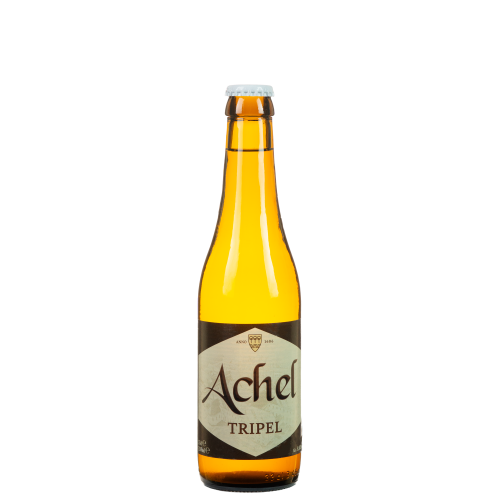Abbey beer
Imposing monasteries, surrounded by vast estates, with monks dressed in habits practising a range of crafts, from cheese-making and beer-brewing... Just the term 'abbey beer' conjures up an intriguing image. The authentic look and delicious flavours do the rest.
Abbey beers have a connection to an existing or former abbey, but otherwise encompass many different beer styles. We are therefore sure you will find your taste in our wide range of abbey beers. Choose one or more beers, add them to your shopping basket and simply order online. We provide 100% insured and fast shipping.
The origins of abbey beers
The fact that Belgian beers are world-famous today is largely thanks to monks, fathers and friars. In the Middle Ages, beer brewing in monasteries and abbeys transformed into craftsmanship. Old Catholic writings, drawings and paintings tell us a lot about beer. Even in the remains of old abbeys, valuable traces of brewing activities can often be found.
Abbey beers today continue the traditions that once originated in the powerful abbeys of yesteryear, even when they no longer exist. Examples include Leffe, Grimbergen and Affligem. All abbey beers made today by commercial breweries such as AB InBev, Alken-Maes and Heineken. Other abbey beers have no real connection to an abbey, such as Corsendonk and Sint-Bernardus.
Large assortment of Belgian abbey beers
The term 'abbey beer' usually refers to its connection with a former or existing abbey. Basically, therefore, it says little about the style of the beer itself. However, they usually fall within one of the following categories.
- The usually brown Double was first brewed by the Westmalle Trappist Fathers in 1856. It has a lower alcohol content than a Tripel, usually around 7%.
- The blonde or amber Triple is heavier and has an alcohol content of between 7 and 10%. This designation was also introduced by the Westmalle Trappists, in 1934, and eagerly adopted by colleagues.
- A Quadruple is the superlative and reaches alcohol levels higher than 8.5%.
There are also abbey beers in other beer styles, such as white beer, saisons and fruit beer. As we said, there is something for everyone.
Label for recognised Belgian Abbey beer
Abbey beer is not a protected hallmark, so any brewery may market beer under that commercially interesting name. This led to a proliferation in the late 20th century, to the frustration of authentic abbey beers. The Union of Belgian Brewers therefore created the hallmark for Approved Belgian Abbey Beer in 1999. Breweries that comply with these rules may use the logo and title on their product and in their communications.
- The brewer is a member of the Union of Belgian Brewers.
- There is a link between the beer and an existing or former abbey where brewing was or is taking place.
- If the beer is brewed by an external partner, it pays charitable or cultural royalties to the abbey or a foundation associated with the abbey.
- The abbey or foundation controls the advertising and marketing of abbey beer.
- Abbey beers marketed after 1999 must be brewed by an existing abbey or under licence by an external brewery, which is bound by contractual terms to use the abbey name.
Abbey beers versus Trappist beers
A Trrappist beer is brewed by Trappists, monks of the Cistercian order, within the walls of their monastery. There is also a seal of approval for Trappists: the Authentic Trappist Product of the International Trappist Association. There are only 10 recognised Trappists worldwide, 5 of which are Belgian. A Trappist beer is an abbey beer, but an abbey beer is not necessarily a Trappist beer.
Buying abbey beer at Belgian Beer Heaven
Abbey beers carry a rich history of delicious flavours and craft brewing processes. From a simple blond abbey beer to complicated Dubbel and Tripels, there is a monk beer for every taste and every occasion. Discover Belgian Beer Heaven's wide range above, order online and receive your beers quickly. Questions about your choice or your order? Contact Belgian Beer Heaven, we are happy and knowledgeable to help.




















